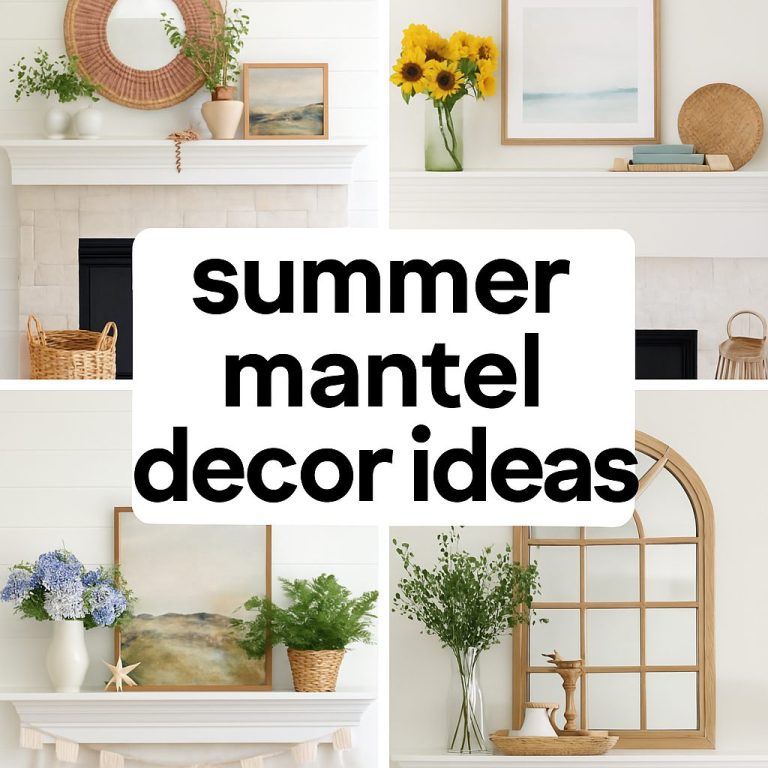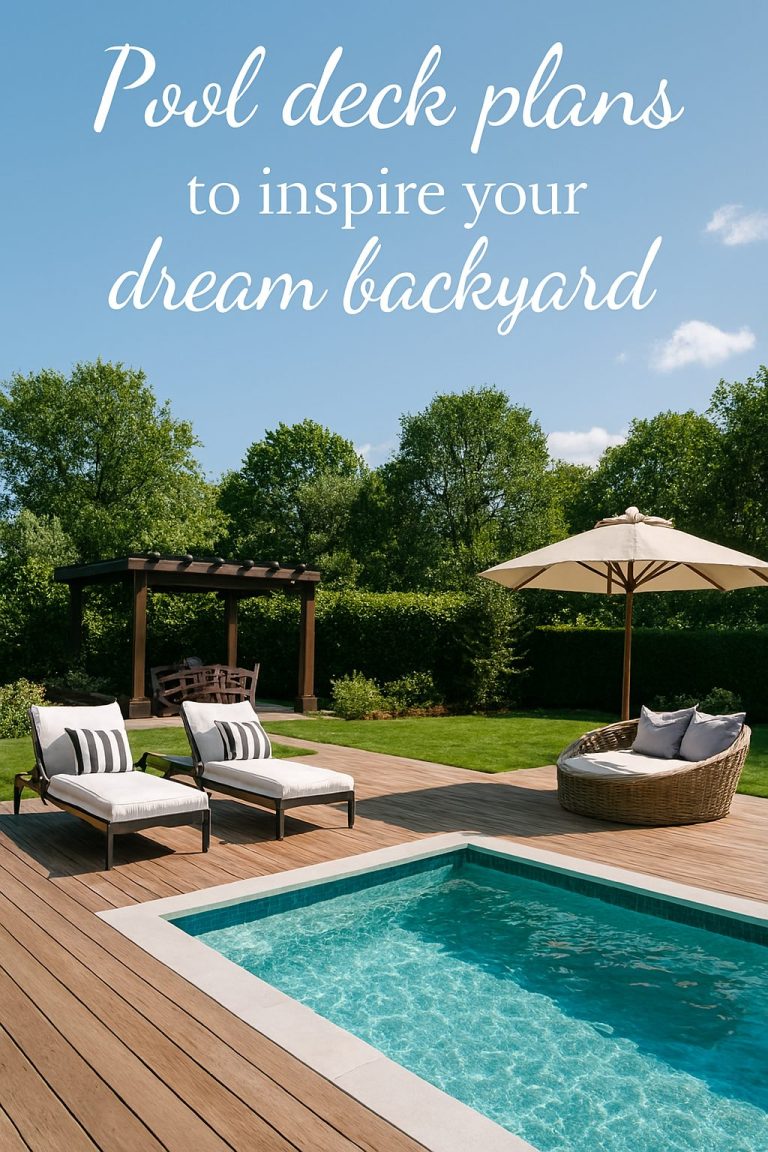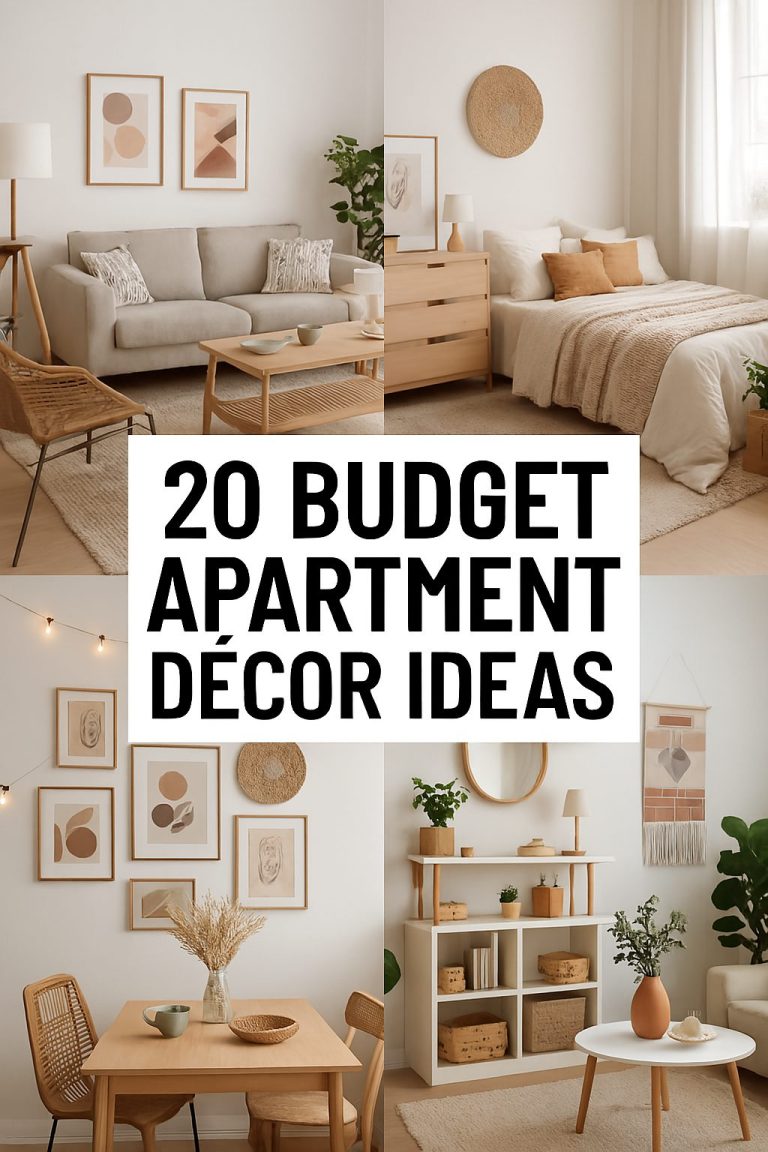15 Mud Kitchen Ideas That Spark Creativity and Outdoor Fun
Mud kitchens have become beloved backyard staples, offering more than just messy fun. They blend tactile exploration, outdoor learning, and imaginative play into one cohesive experience. Whether you’re working with upcycled wood, thrifted containers, or a modest DIY setup, this guide presents 15 mud kitchen ideas that inspire creativity while staying practical and budget-friendly.
Let’s explore concepts that span rustic charm, sensory engagement, and aesthetic flair—all designed to create magical play moments outside.
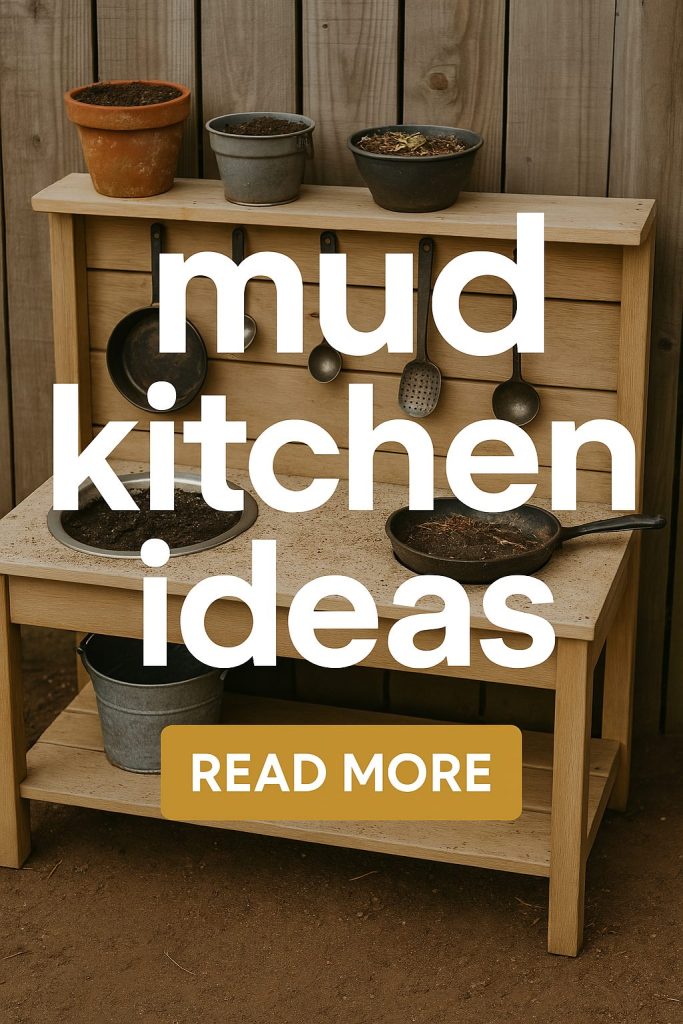
1. Classic Wooden Mud Kitchen with Recycled Materials
A timeless choice, this style centers around reclaimed wood like pallets or old cabinetry. Weathered textures, metal bowls, and vintage drawer knobs set the tone for a grounded, nostalgic feel. Add a small chalkboard for playful recipe writing and install hooks for hanging utensils.
To elevate the design, use untreated wood for an authentic weathered look and seal it to withstand moisture.
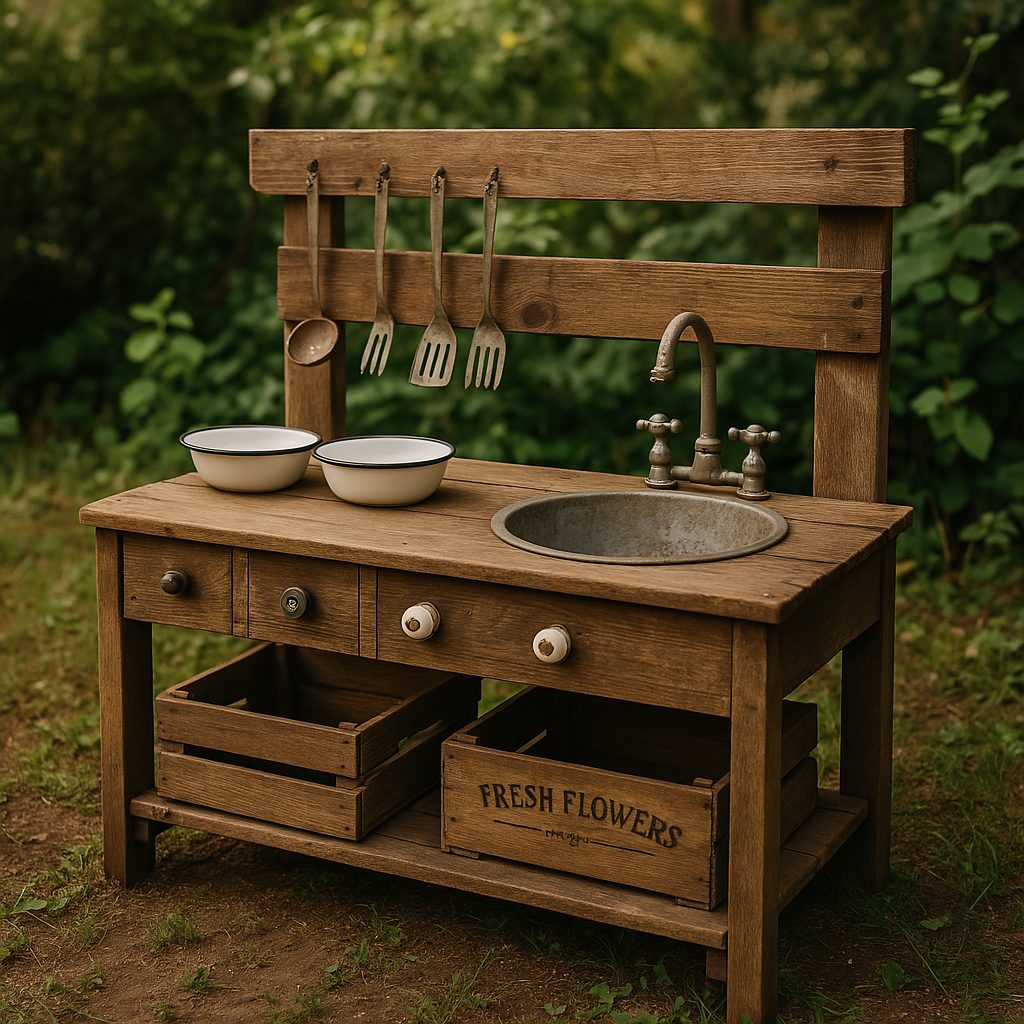
2. Boho Mud Kitchen Under the Canopy
Nestled beneath a pergola or shaded tree, this mud kitchen embraces earthy tones and layered textures. Macramé hangings, enamel cookware, and patterned tiles serve both aesthetic and functional purposes. Woven baskets and linen curtains soften the scene while encouraging sensory discovery.
Style it with trailing plants, terracotta pots, and driftwood shelves to echo a relaxed, nature-loving vibe.
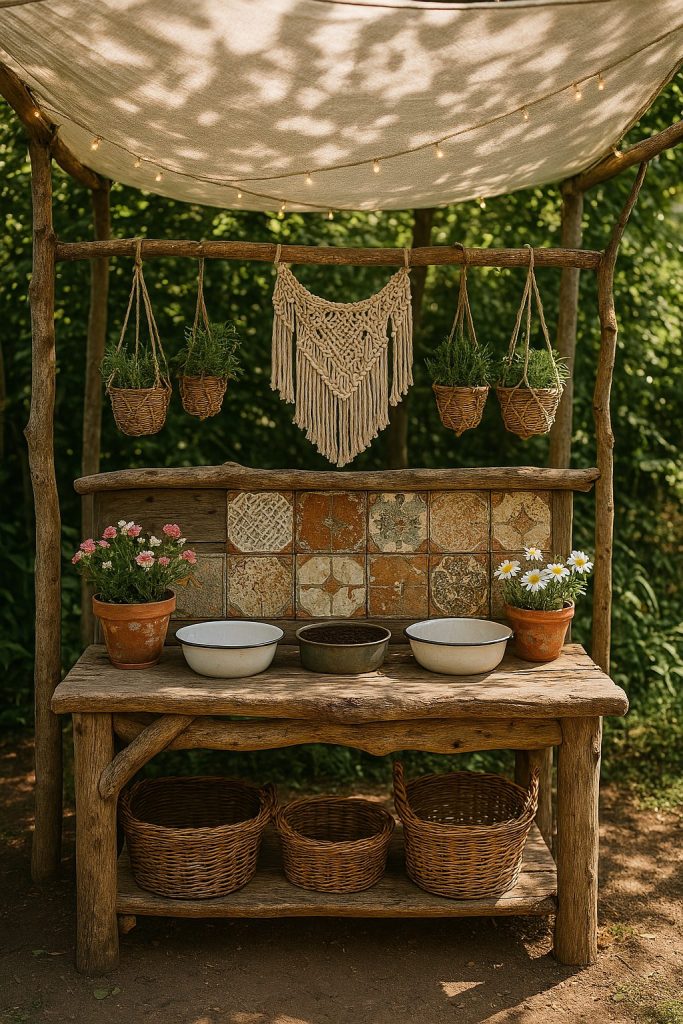
3. Bright and Bold Color Splash Mud Kitchen
Inject personality by painting cabinetry and shelving in vibrant shades like aqua, coral, or citrus yellow. Let children choose their favorite palette to foster ownership. Paint-dipped utensils, checkerboard countertops, and stenciled designs can turn ordinary elements into visual focal points.
This type of design brings energy and joy to any garden space, encouraging more frequent and enthusiastic use.
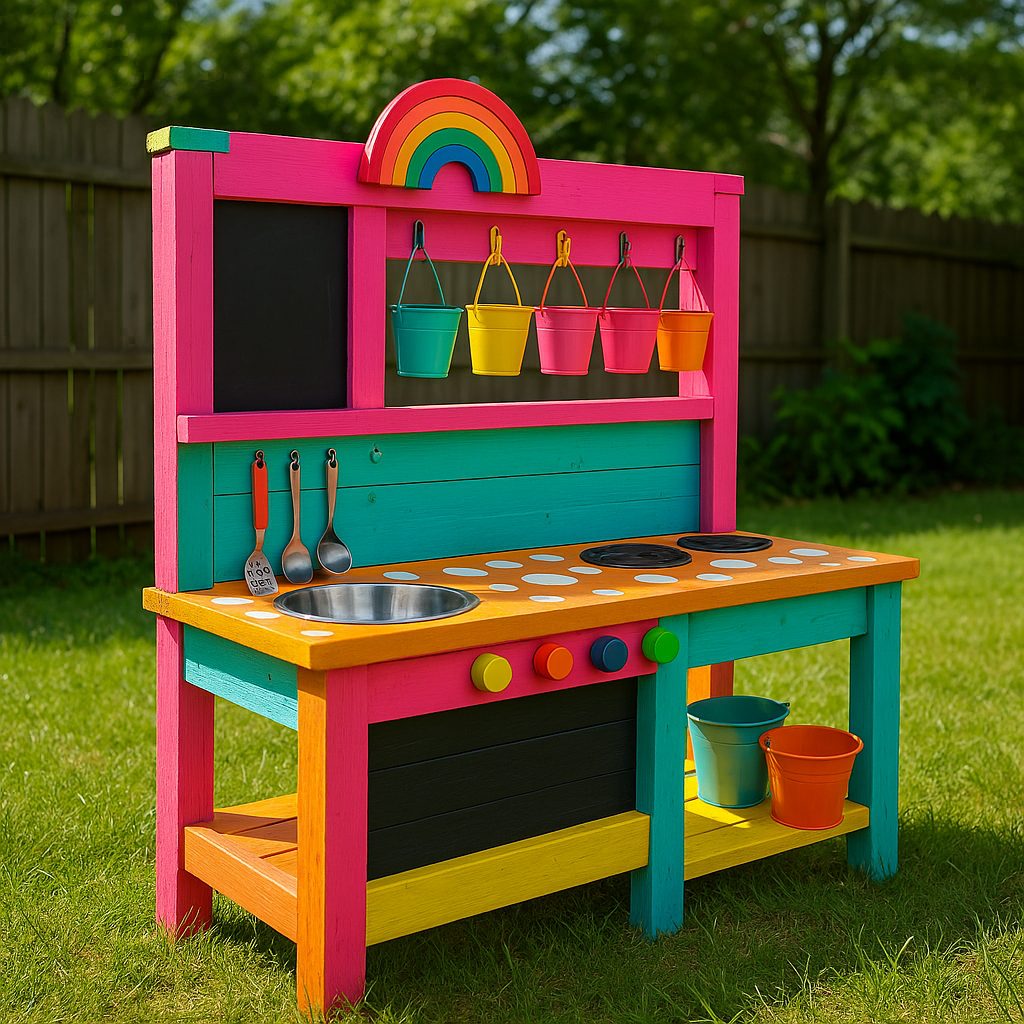
4. Sensory-Centric Mud Kitchen With Nature Stations
Encourage exploration by integrating themed nature stations—water tubs, herb corners, sand trays, or texture walls. Use labeled crates for organizing natural materials like leaves, pebbles, pinecones, and flower petals. These mini stations can rotate seasonally to keep the experience dynamic.
Ideal for curious learners, this approach turns mud play into a gateway for environmental awareness and storytelling.
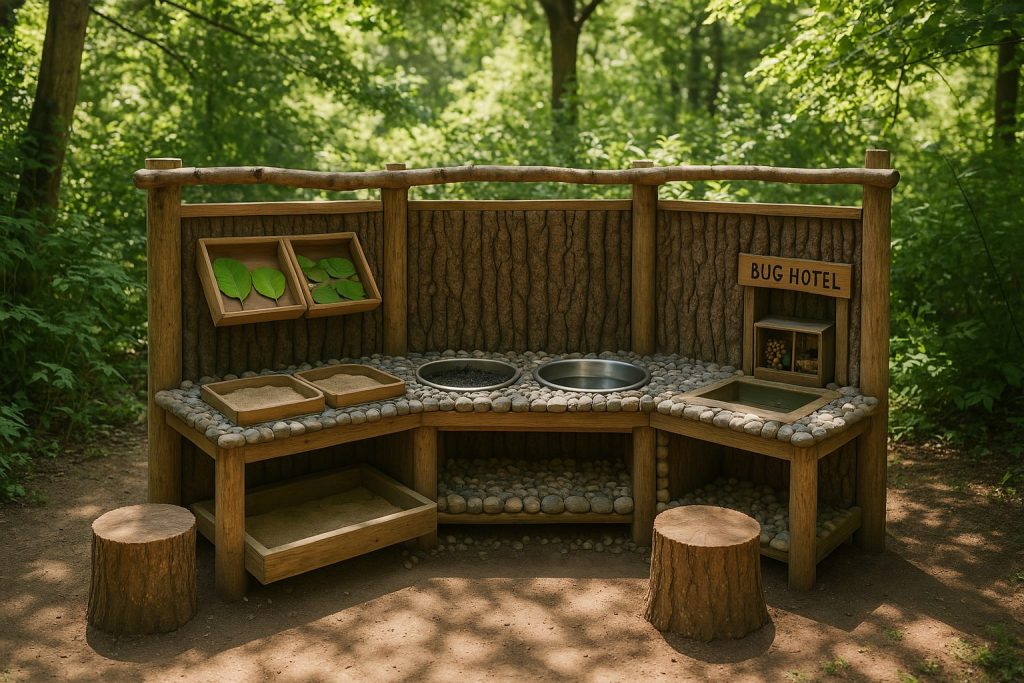
5. Budget-Friendly Mud Kitchen Using Thrifted Finds
Repurposing thrift store items transforms everyday objects into mud kitchen treasures. An old nightstand becomes a prep counter, mismatched bowls gain new life as mixing tools, and salvaged window frames act as splash guards. Paint and seal these items for cohesion and durability.
This setup proves that creativity doesn’t require a large budget—just vision and resourcefulness.
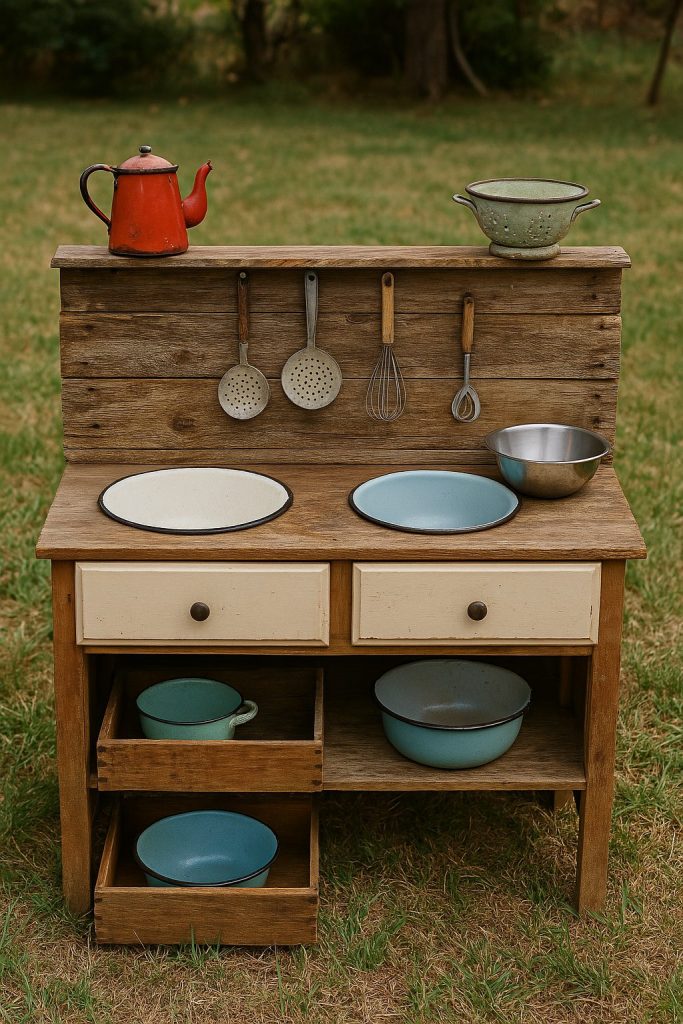
6. Farmhouse-Inspired Mud Kitchen With Open Shelving
Channel rustic elegance using soft neutrals, gingham fabrics, and open wood shelving. Incorporate items like enamelware pitchers, mason jars filled with leaves, and galvanized watering cans. Vintage crates turned sideways make perfect natural storage units.
Add fabric bunting and ceramic dishes for a nostalgic touch that evokes countryside comfort.
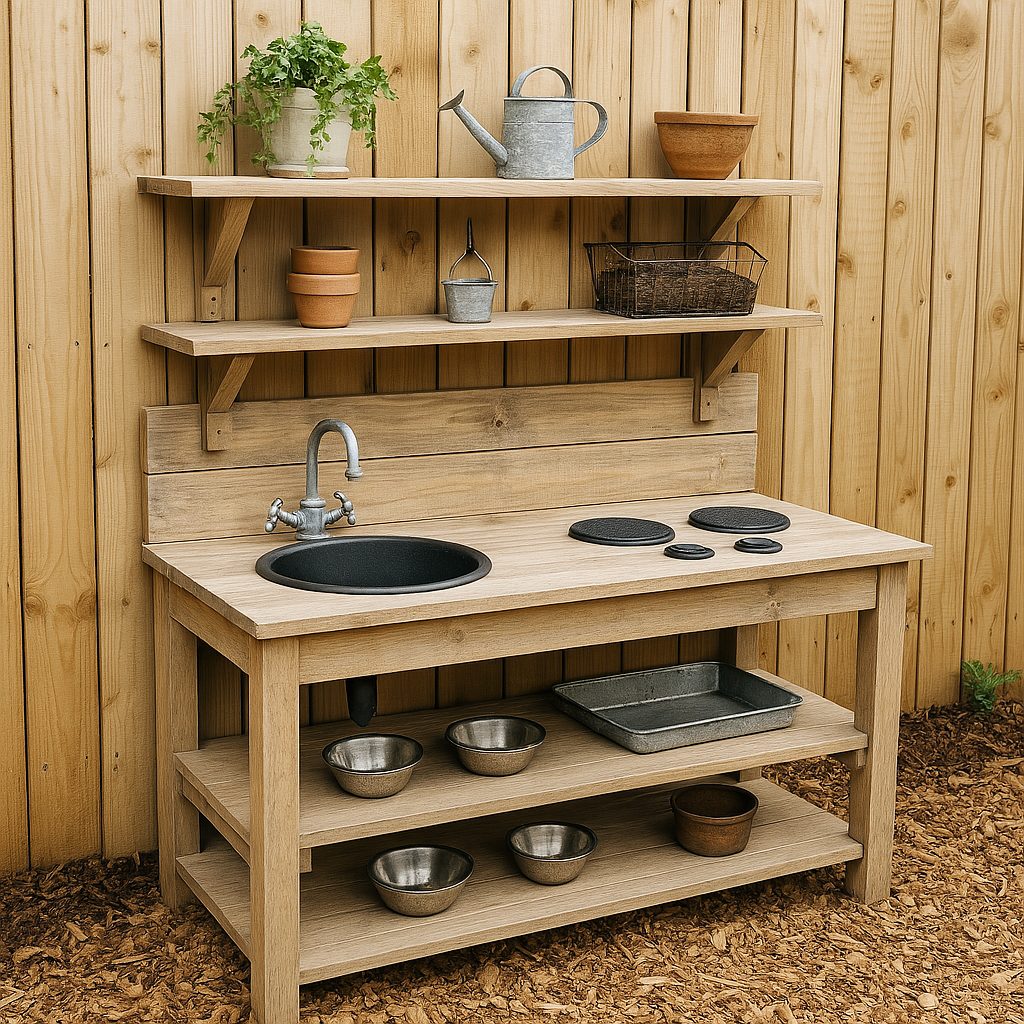
7. Mud Kitchen With Faux Campfire Corner
Stimulate storytelling and pretend cooking with a campfire station made from felt flames, smooth stones, and twig logs. This addition invites imaginative play around “roasting” leaves or boiling rainwater stew. Nearby tents or tree stumps complete the campground atmosphere.
It’s a thematic touch that transforms your mud kitchen into a narrative playground.
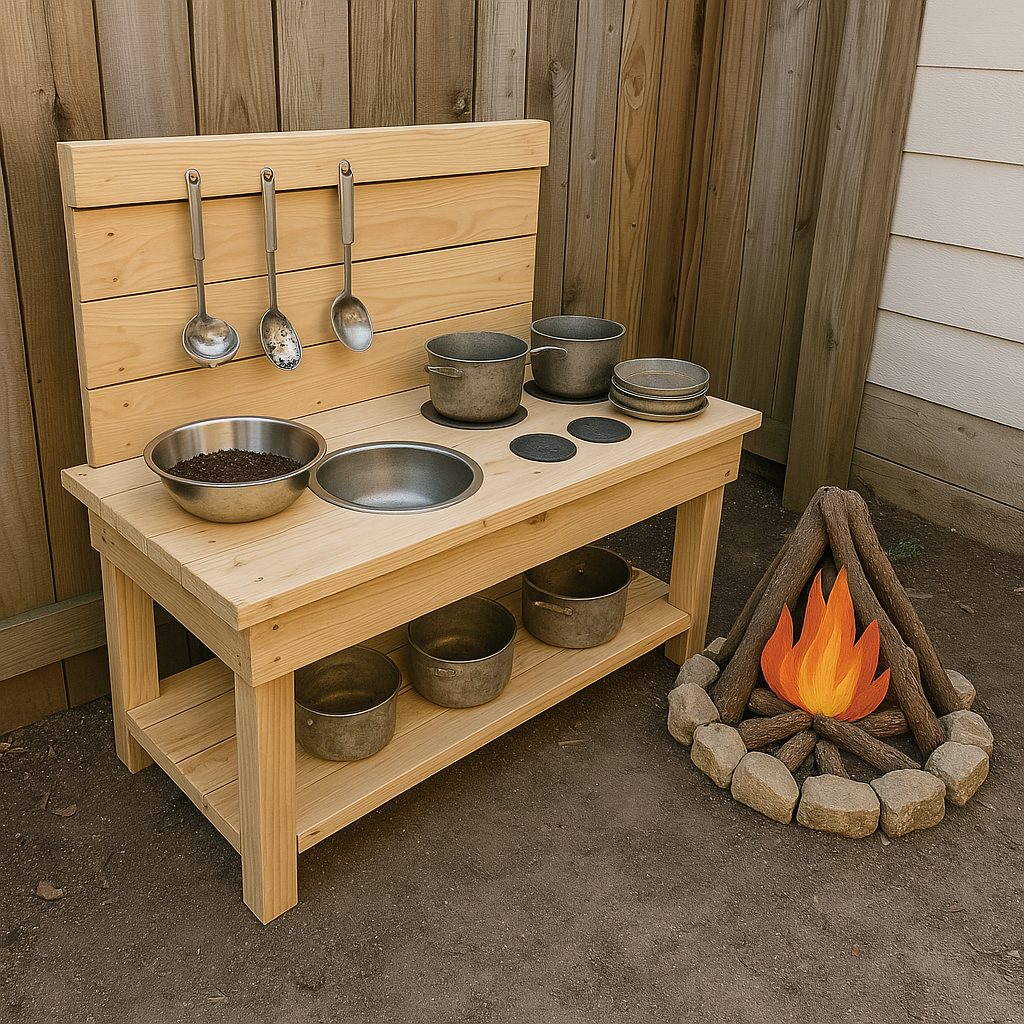
8. Soap and Suds Mud Kitchen
Add a cleaning station with eco-friendly soaps, spray bottles, and water basins. This gives children the chance to wash their tools, dishes, and even muddy hands. Incorporate bubble-friendly substances and textured sponges for enhanced sensory interaction.
This idea turns cleanup into part of the play process while encouraging responsibility and motor skills.
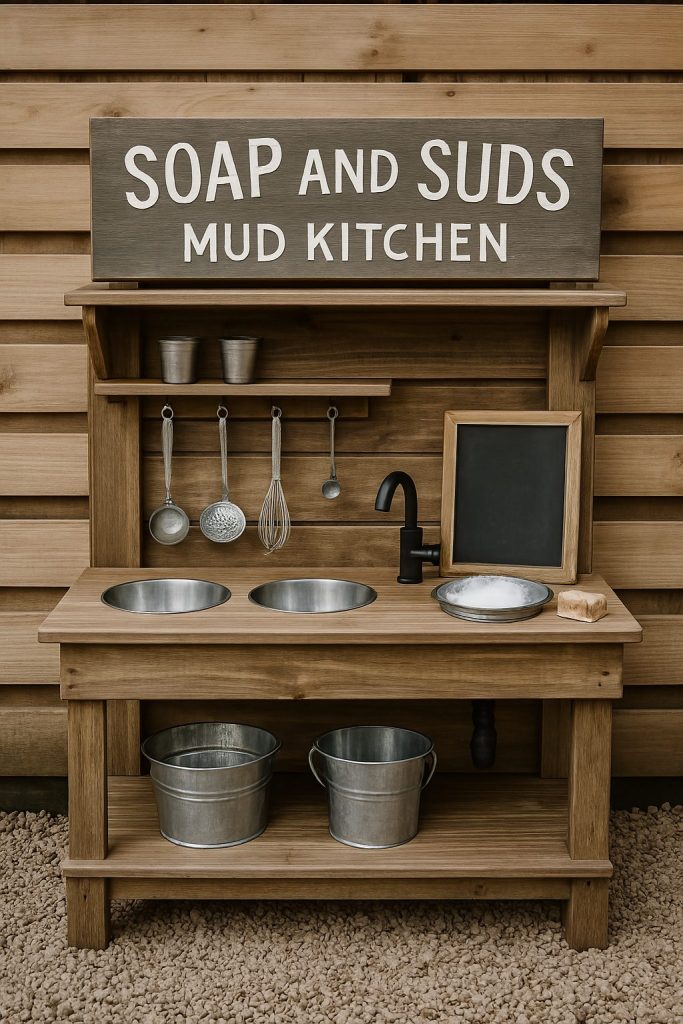
9. Rainwater-Integrated Mud Kitchen
Introduce sustainability with water features like rain barrels, funnels, and tubing. Old watering cans can serve as reservoirs that feed into basins or sinks. By integrating flow elements, kids learn about conservation and mechanics while enjoying playful waterwork.
This functional setup doubles as a low-tech STEM station.
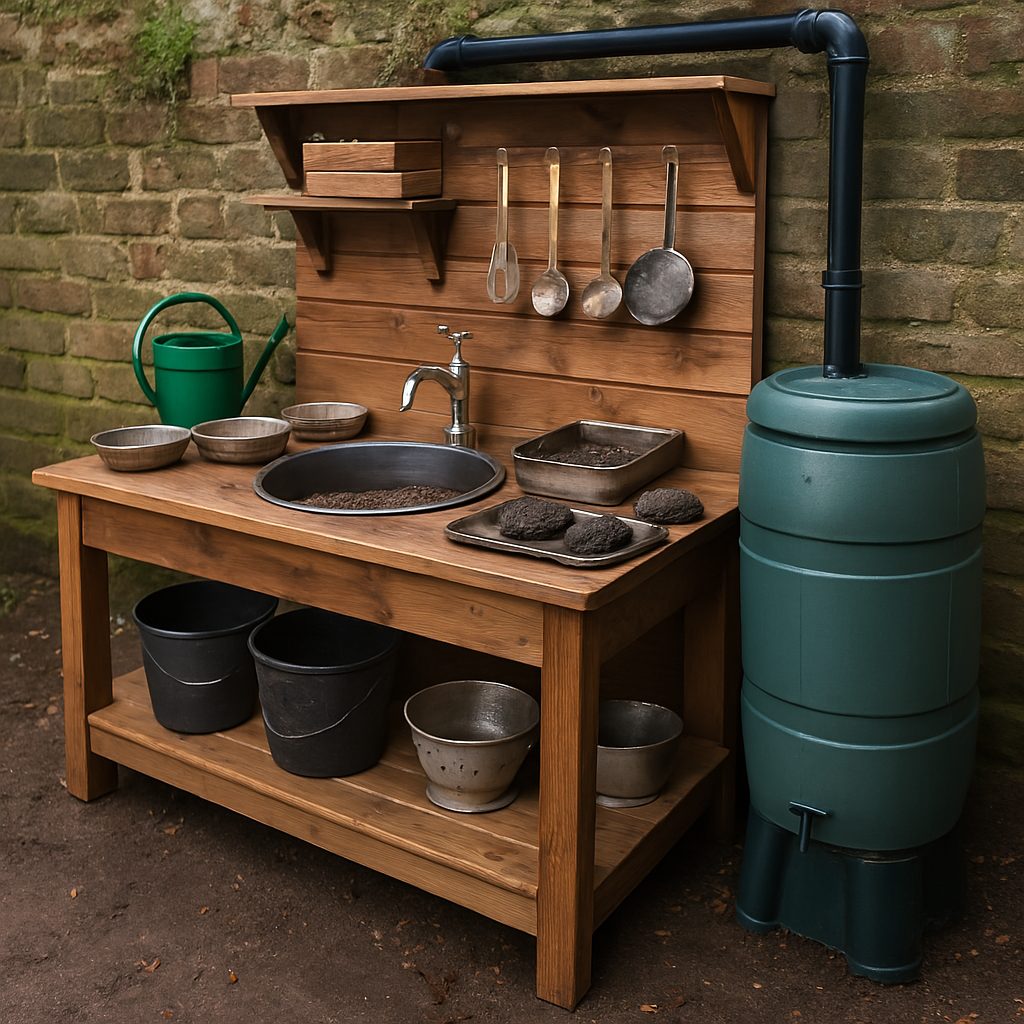
10. Seasonal Decor Mud Kitchen That Evolves Year-Round
Keep the play environment fresh by changing decorative elements seasonally. Use spring blossoms and butterfly prints in March, seashells and linen accents in summer, amber leaves and gourds in autumn, and pinecones or silver garlands in winter. Shelf styling and themed containers help organize the rotation.
Photograph and log the designs for inspiration or to create a Pinterest board.
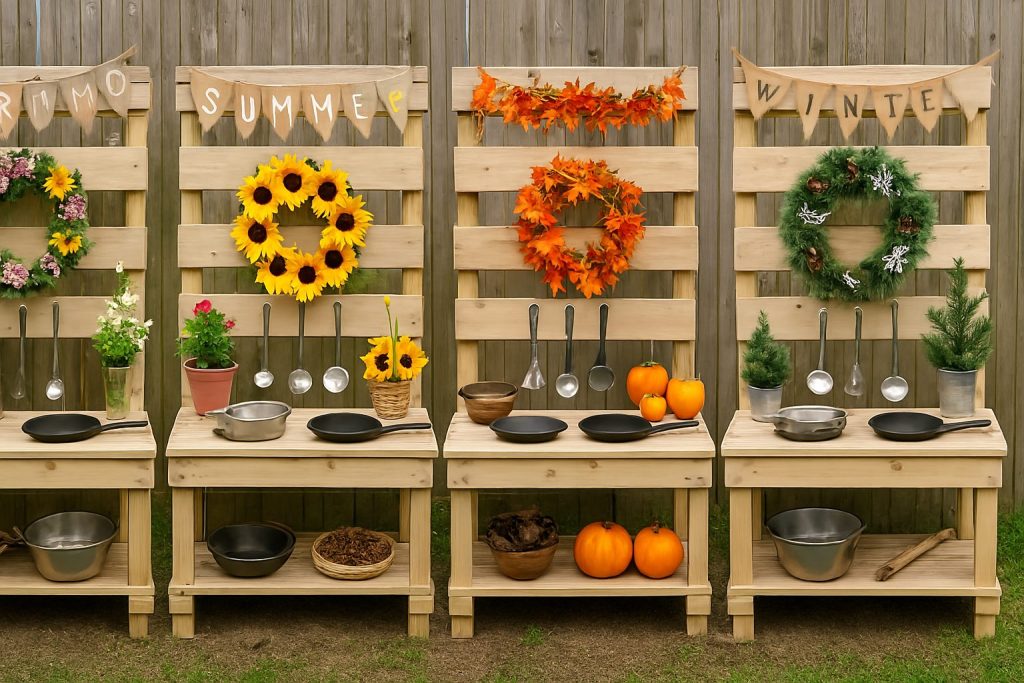
11. Herb Garden Mud Kitchen With Edible Plants
Blend play and learning by placing small pots of mint, basil, rosemary, and lavender within reach. Children can pluck leaves to scent their creations or observe growth cycles. Aromatic plants encourage gentle interaction and add life to the space.
The dual function—garden and kitchen—makes this idea both beautiful and educational.
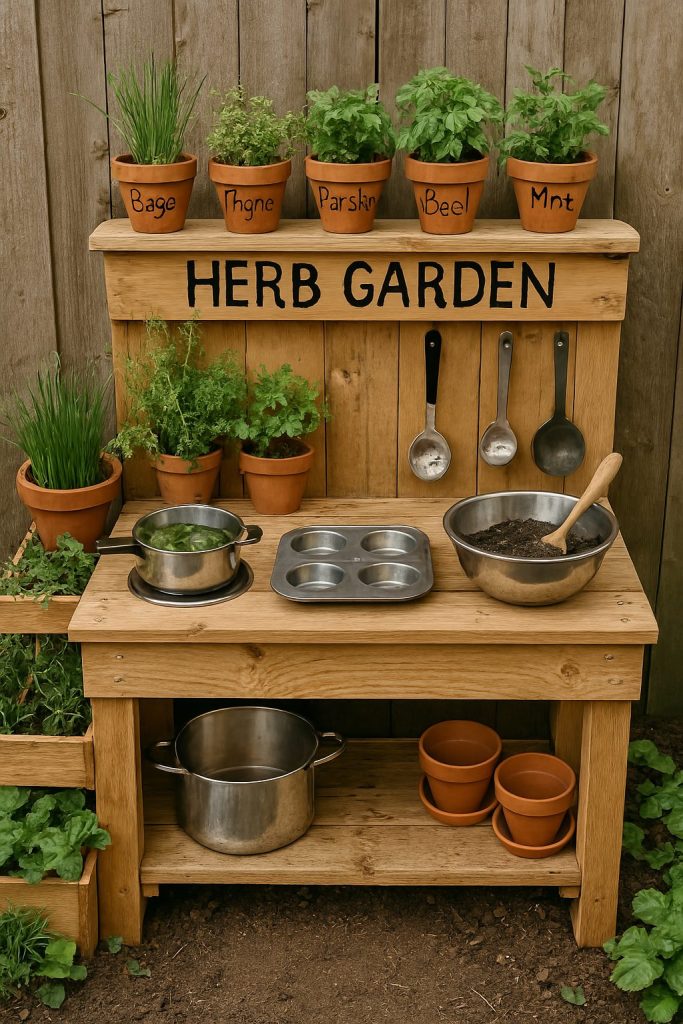
12. Vintage Cottage Mud Kitchen With Soft Textiles
Embrace slow play with a vintage-style mud kitchen featuring lace curtains, enamel mugs, and floral decals. Woven dish towels and embroidered aprons add layers of nostalgia. Use distressed wood and antique hooks to complete the cottage aesthetic.
This setup invites calm and imaginative play, ideal for quieter personalities.
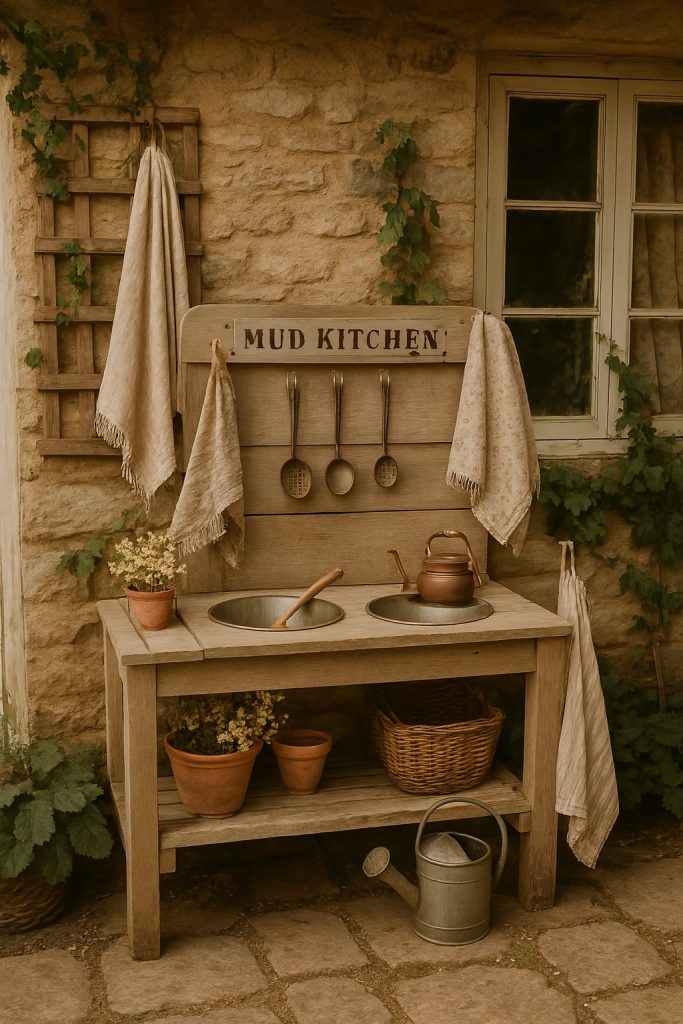
13. Natural Materials Mud Kitchen With Earthy Accents
Use stone slabs for countertops, clay pots for storage, and woven fiber mats for flooring. Avoid plastic and synthetics to preserve an earthy, grounded atmosphere. Incorporate logs as seating and bamboo structures as supports.
This minimalist, nature-immersed setup helps children feel more connected to their environment.
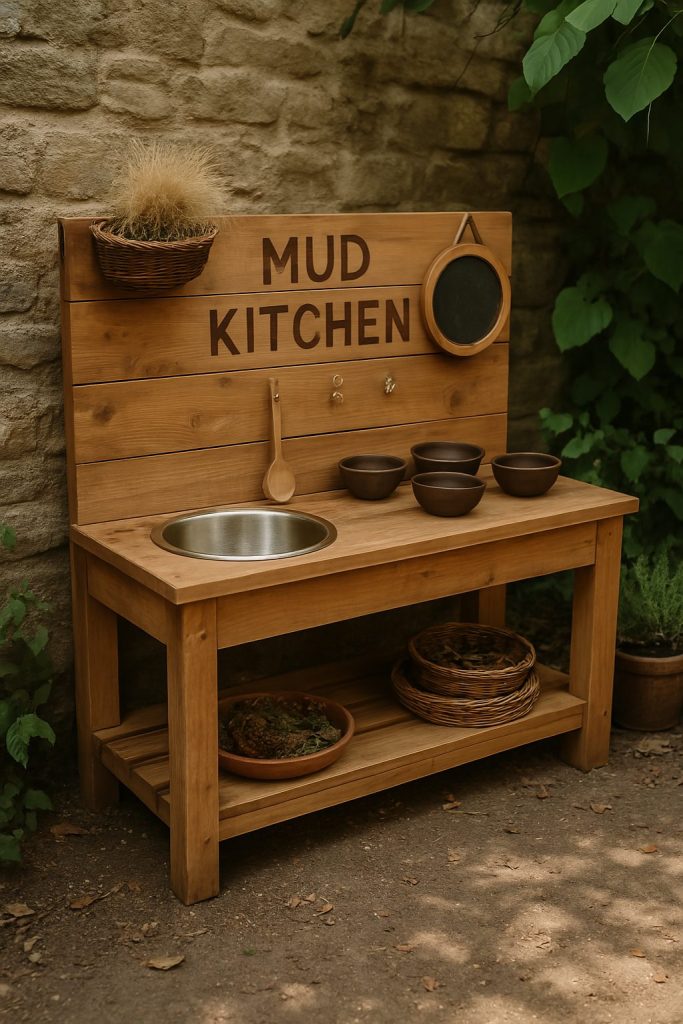
14. Industrial Chic Mud Kitchen With Metal Finishes
Channel warehouse-inspired aesthetics using corrugated metal sheets, black piping, and steel accessories. Contrast these with wooden benches and matte paint finishes in grey or navy. Add chain-style shelving and toolbox-style utensil storage for authenticity.
For a family that appreciates strong style statements, this design adds edge and sophistication to outdoor play.
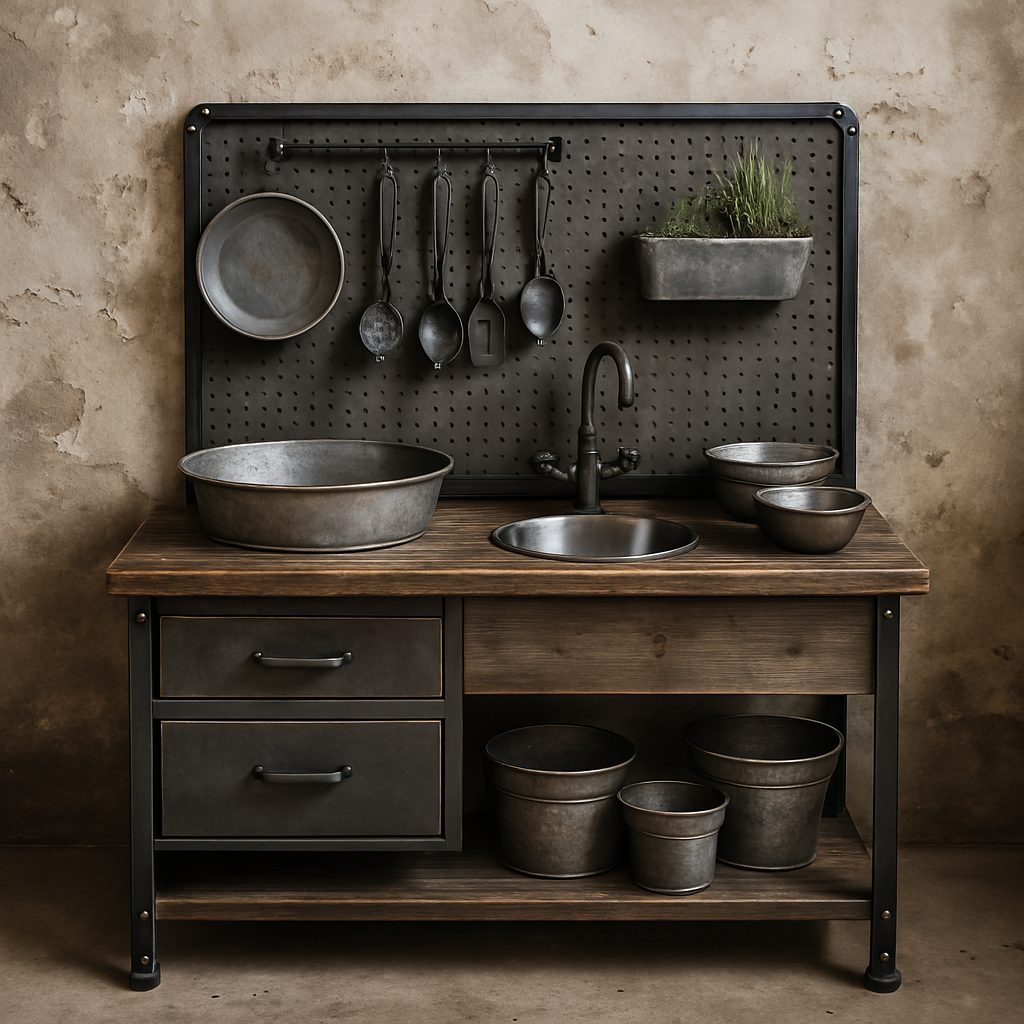
15. Convertible Mud Kitchen With Foldable Elements
Make it space-efficient with fold-down counters, stackable crates, and removable surfaces. This type of mud kitchen is perfect for small patios or urban balconies. Hooks, hinges, and collapsible tubs allow for easy storage and setup.
For renters or design minimalists, this setup offers flexibility without compromising on imaginative potential.
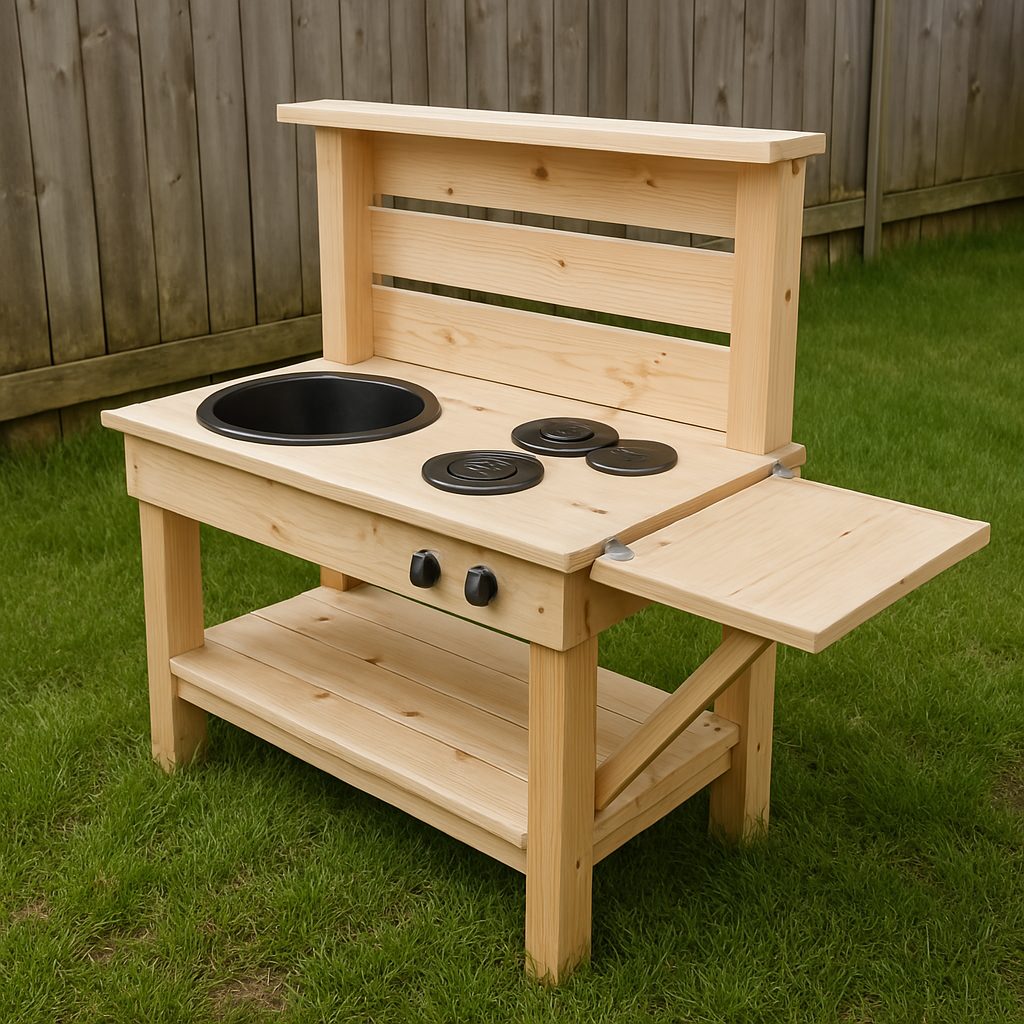
Conclusion:
By exploring these 15 mud kitchen ideas, you’ll discover how outdoor play can evolve from messy activity into an immersive, aesthetic experience. Whether you prioritize sustainability, seasonal engagement, or playful storytelling, mud kitchens invite children to create, explore, and connect—with nature, their senses, and one another.



